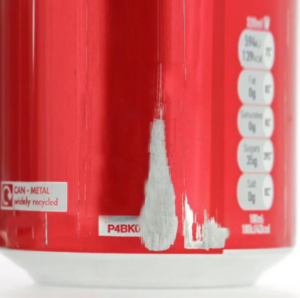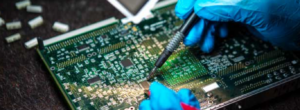
Abrasion testing for coated surfaces ensures the durability and longevity of various products. This process measures the resistance of materials to wear and tear, helping manufacturers determine how well a coating can protect its substrate over time.
Abrasion or durability testing is essential across various industries, from automotive and electronics to furniture and medical devices. It ensures products maintain their quality and aesthetic appeal throughout their lifespan. In this guide, we’ll go over the importance of abrasion resistance of products, what’s involved in the process, its significance in various industries, and how it can help ensure long-lasting finishes.
Why Abrasion Testing is Crucial for Coated Surfaces
Your product’s coatings protect surfaces from environmental factors, mechanical wear, and chemical exposure. A durable coat enhances products’ longevity and makes them more resilient to everyday use.
Durability testing is crucial in manufacturing to ensure your products last, improving customer satisfaction. Here are some of the reasons why manufacturers should make it a priority in their production process:
- Determines Durability: By simulating wear and tear, abrasion testing helps manufacturers understand how long a coating will last under real-world conditions.
- Prevents Premature Wear: Identifying weak coatings early on can prevent product failures and the associated costs of repairs or replacements.
- Reduces Maintenance Costs: Durable coatings reduce the frequency of maintenance and product recalls, leading to cost savings and improved product reliability.
Without abrasion testing, products may suffer from premature wear, leading to increased maintenance costs and reduced lifespan. The potential failure rates of your products will affect your brand reputation.
Industries that Benefit from Abrasion Testing
Various sectors benefit from coating durability tests, allowing manufacturers to ensure the production of superior and lasting products. Here are some of the industries that benefit from this testing process:
Automotive Industry

Durability testing is vital in ensuring vehicles’ durability and aesthetic appeal. Car paints and interior finishes are constantly exposed to harsh conditions, such as UV radiation, road debris, and physical contact from the vehicle’s occupants. Abrasion testing helps manufacturers evaluate the resistance of these coatings to wear and tear, ensuring they maintain their appearance and functionality over time.
When proper tests are performed, the vehicle’s resale value increases, reducing the frequency and need for repairs and repainting. Moreover, abrasion-resistant coatings improve the longevity of interior materials, such as dashboards and seats, contributing to a more durable and visually appealing car interior.
Consumer Electronics

Consumer electronics, such as smartphones, tablets, laptops, screens, and cases, degrade over time due to constant use. These devices are frequently handled and exposed to potential scratches from everyday objects like keys and coins.
Abrasion testing is crucial for quality control. It helps manufacturers develop coatings that withstand such wear and maintain the device’s clarity and touch sensitivity.
Testing also applies to protective cases, ensuring they provide effective protection while retaining their aesthetics. Improving abrasion resistance enhances the user experience, reduces warranty claims, and boosts brand loyalty.
Furniture Industry
Furniture manufacturers produce aesthetically pleasing and functional products. During production, it is crucial to ensure the longevity of finishes on wood or metal surfaces, keeping furniture pristine and extending its life.
Durability testing equipment simulates daily use and tests the amount of load such furniture can carry. Manufacturers also need to pay attention to weight-bearing parts and frames to ensure that these components can withstand fatigue while allowing users to move the furniture from one area to another, withstanding fatigue and wear through repeated usage.
Abrasion testing allows manufacturers to select and apply coatings that provide long-lasting protection against scratches, scuffs, and stains. This not only extends the life of the furniture but also ensures it retains its aesthetic appeal, which is crucial for consumer satisfaction.
Medical Devices
Abrasion testing is essential for medical devices, where coatings must withstand rigorous cleaning, sterilization, and handling. Medical equipment and tools are often exposed to harsh disinfectants and repeated use, making durable coatings necessary to ensure safety and functionality. Abrasion testing helps manufacturers develop coatings that remain safe, effective, and compliant with strict regulatory standards.
Abrasion Testing Methods and Standards
Several testing methods and standards are employed and internationally recognized in abrasion testing, which include the following:
- Taber Abrasion Test: The Taber Abrasion Test is a widely used method for evaluating the wear resistance of materials. In this test, a specimen is mounted on a turntable and subjected to wear by rotating it under abrasive wheels or rollers. The degree of abrasion is measured by the weight loss of the specimen after a specified number of rotations. This method is versatile and can be used for various materials.
- ASTM D4060: This is a standard test method for evaluating the abrasion resistance of organic coatings using the Taber Abraser. This method specifies the procedures and equipment required to conduct the test, ensuring consistency and reliability in the results. It is widely used in automotive, electronics, and furniture industries.
- Martindale Abrasion Test: Also known as ASTM D4966-22, this test is commonly used for assessing the wear resistance of textiles and upholstery materials. It helps manufacturers evaluate the durability of fabrics used in clothing, furniture, and automotive interiors, ensuring they can withstand repeated use and maintain their appearance over time.
- Crockmeter Test: This test evaluates the colorfastness of textiles to rubbing. The results are expressed in terms of gloss retention. The degree of color transfer from the specimen to the white fabric is assessed visually or by using a color measurement device.
ISO standards for abrasion testing include ISO 7784-2, ISO 12947 for the Martindale Abrasion Test, and ISO 105-X12 for the Crockmeter Test. These standards provide comprehensive guidelines for testing the abrasion resistance of various materials.
The Abrasion Testing Process
Abrasion testing typically involves the following steps:
- Sample Preparation: A sample of the coated surface is prepared according to specified dimensions.
- Testing: Using standardized equipment, the sample is subjected to abrasion under controlled conditions.
- Measurement: Wear is measured by evaluating the loss in mass, thickness, or appearance changes.
- Recording and Analyzing Data: All test conditions, observations, and measurements are documented. The data is then analyzed to determine the material’s abrasion resistance.
Certain factors affect the testing results, including the type of coating, abrasive material used, test conditions (such as pressure and speed), and the sample’s preparation.
Different coatings (e.g., paint, polymer, metal) have varying degrees of hardness and adhesion, affecting their abrasion resistance. On the other hand, setting up higher loads and speeds can increase wear rates. At the same time, the type and hardness of the abrasive medium can significantly impact the wear results.
Various testing equipment are used to test different materials:
- Taber Abraser: This consists of a rotating turntable on which the specimen is mounted and abrasive wheels or rollers that apply a controlled abrasive force.
- Martindale Abrasion Tester: This equipment features multiple sample holders and abrasive fabric disks that apply a circular rubbing motion to the specimens.
- Crock meter: This features a rubbing head that applies a controlled force to a specimen against a standard white fabric.
Real-World Applications and Benefits
Coating durability tests have far-reaching applications for improved quality control. Car manufacturers can use abrasion testing to enhance their paint formulations, resulting in a new line of vehicles with superior scratch resistance. Smartphone companies can use this process to improve screen durability by identifying and applying more resilient coatings, reducing screen damage.
Investing in abrasion testing equipment provides crucial benefits for manufacturers:
- Cost Savings: Reduced product failures and returns translate to significant cost savings.
- Improved Reputation: Durable products enhance brand reputation and customer trust, boosting brand loyalty and sales.
- Competitive Advantage: Offering high-quality, durable products sets companies apart, making your brand well-known for producing high-quality products.
Choose Top-of-the-Line Abrasion Testing Equipment
Abrasion testing is critical in ensuring the durability and longevity of coated surfaces. This process simulates real-world wear and tear, helping manufacturers produce high-quality, long-lasting products. Prioritizing abrasion testing reduces maintenance costs and prevents product failures.
Manufacturers must use the best abrasion testing equipment to gain that competitive edge. Danilee Co. has built a solid reputation for providing world-class products across industries, catering to the unique needs of every business. We specialize in producing and designing world-class abrasion and rub testers suited to your specifications.
Call 830-438-7737 today to learn more about our products, or contact us online, and our specialists will happily answer your questions.
Leave a Reply